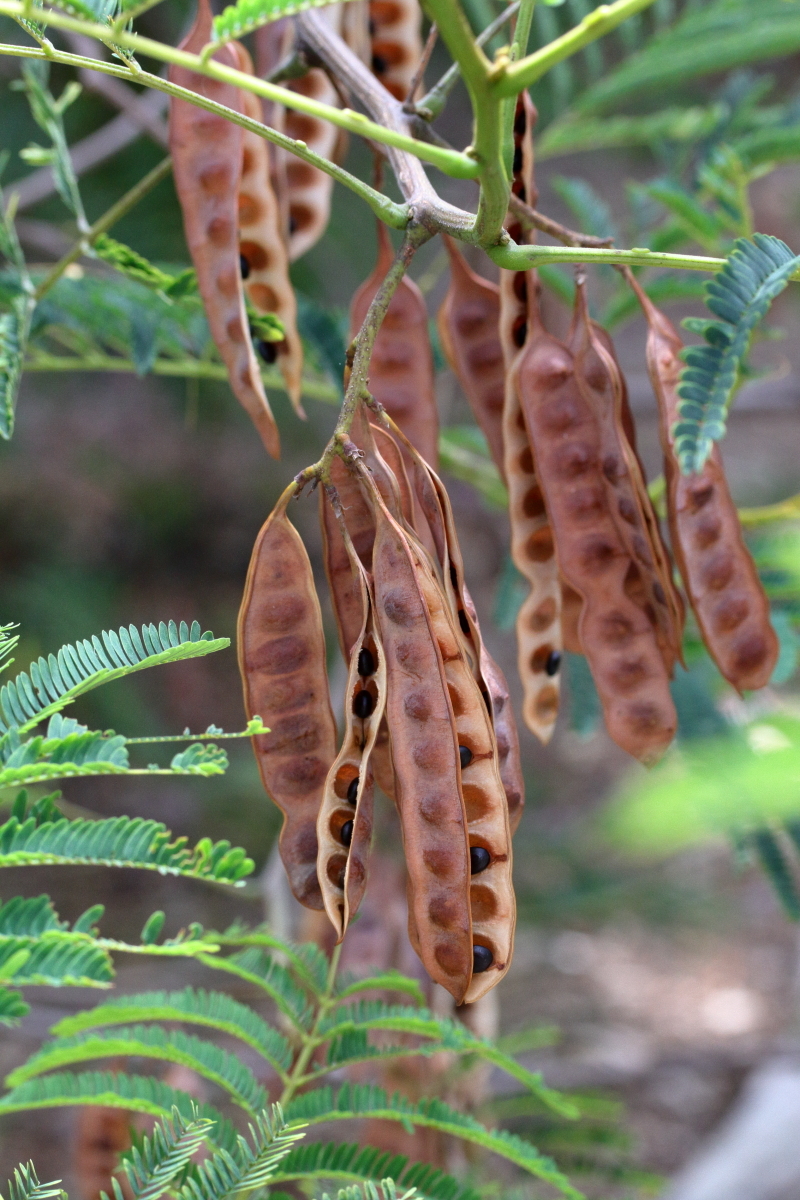Paraserianthes lophantha subsp. lophantha
Crested WattleSmall tree to shrub, to 8 m high; branchlets with decurrent ridges, softly hairy. Leaves with rachis 3–12 cm long, finely hairy, with at least a raised gland at the junction of the terminal pinna; pinnae in 8–13 pairs; pinnules in 15–40 pairs, oblong, 4–10 mm long, 1–4 mm wide, asymmetric, mostly glabrous, apex acute, mucronate. Racemes often 2 per axil, 4–8 cm long, softly hairy; peduncles 10–30 mm long. Pods 8–12 cm long, 15–25 mm wide, yellow to reddish, glabrous, stalked; seeds 6–12, black, transverse. Flowers Aug.–Sep.
GleP, VVP, GipP, OtP, WaP, Gold, CVU, DunT, EGL, WPro, HSF, HNF, OtR, Strz. Also naturalised WA (also native in WA), SA, NSW, Tas. Native to Western Australia. Widespread and troublesome weed in coastal or near-coastal areas. Buried seeds remain viable for many years.
While considered to be a post-European weed in Victoria, it was recorded as a dominant shrub on the summit of Mt Rodondo, a steep-sided granite island c. 10 km south of Wilsons Promontory, on its claimed first ascent by Europeans in 1947.
Entwisle, T.J.; Maslin, B.R.; Cowan, R.S.; Court, A.B. (1996). Mimosaceae. In: Walsh, N.G.; Entwisle, T.J., Flora of Victoria Vol. 3, Dicotyledons Winteraceae to Myrtaceae, pp. 585–658. Inkata Press, Melbourne.
 Spinning
Spinning

